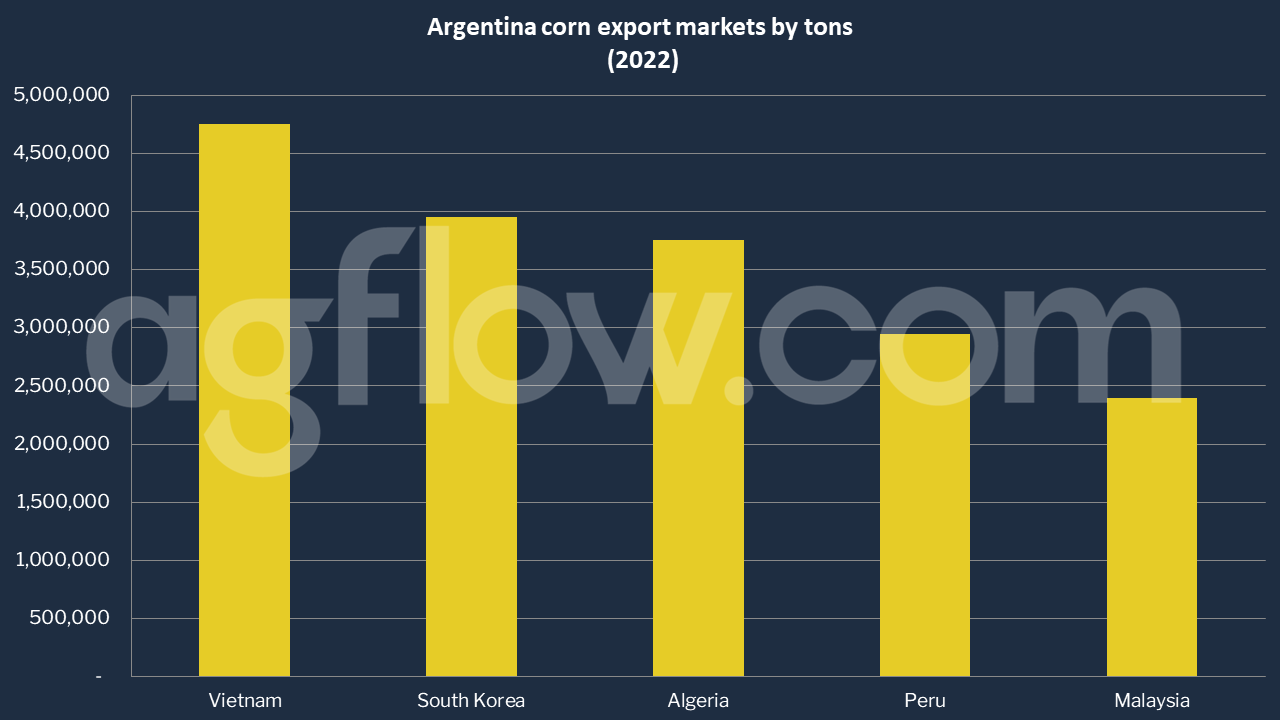Argentina Corn: Tight Supplies of New Output for Export
Reading time: 2 minutes
Argentina Corn – The USDA estimates Argentine Corn production for MY 2022-2023 at 45 million tons. Three consecutive years of La Nina weather patterns, causing drought in key growing areas, caused severe damage to the early planted Corn, which usually accounts for 35-40 percent of the total area and an even larger share of the total volume. Roughly 800-900,000 hectares are estimated to be lost (mainly cut for silage for animal feed) and will not be harvested for grain.
The late-planted Corn is also somewhat affected in several areas, but rains as of mid-January have brought relief to farmers and have put a stop to the decline in production. Many farmers still hope to obtain average yields for late-planted Corn. If dry conditions return, especially in mid/late February, further cuts would be expected. Most contacts estimate harvested area between 6.4-6.6 million hectares, of which only 20 percent would be early planted Corn and the balance late planted Corn.
Early Corn is usually planted during September-October in the most productive areas. During the past planting season, farmers had to cut area from their typical fields due to the lack of moisture in the soil. Dry conditions and high temperatures during its development until mid-January when some showers appeared but came too late for early Corn as it had already tasseled. The best conditions of the crop are seen to the west of the Corn Belt, but there is very little early Corn planted there. Moving to the east, towards Rosario city and Entre Rios province, the crop condition drops. Average yields for early Corn are expected to drop by 40-50 percent from a typical year.
Late Corn is usually planted in early December, this year; many fields were planted later than usual (even in mid-late January) because of dry soils. Many fields are not expected to reach potential average yields and will also run the risk of early frosts. If farmers receive normal rainfall in February and March, the country’s average yields for late Corn could be in the range of 7.0-7.5 tons per hectare. Late Corn is very popular among farmers as its production is usually very stable, with tasseling in February, a month in which it normally rains more and temperatures are lower than in January. Improved seed technology and adapted crop management have allowed this switch.

Argentina Corn Export
As per the AgFlow data, Argentina’s total export volume was 34.6 million tons in 2022. Key markets were Vietnam (4.7 million tons), South Korea (3.9 million tons), Algeria (3.7 million tons), Peru (2.9 million tons), and Malaysia (2.4 million tons). In January 2023, Argentina shipped 0.9 million tons of Corn. The largest markets were Peru, Chile, Colombia, Yemen, Ecuador, Malaysia, and Indonesia.
Exports for MY 2022-2023 are set downwards at 32.2 million tons, in direct line with the lower expected Corn supplies. In 2022, exporters applied for Government export certificates for 10.5 million tons of Corn for the MY 2022-2023 crop. Approximately eight million tons of exports were predicted for March-May 2023. However, due to the failure of the early Corn crop harvest, which generally begins in March, supplies of new production for export will be tight.
As with wheat, the Government declared that Corn export certificates for shipments dated between December 2022-Februay 2023 could be rolled by 180 days to take pressure off the domestic market and allow local users to buy Corn without the pressure of exporters buying large volumes when supplies are tight. Domestic consumption for MY 2021-2022 and 2022-2023 will exceed 14 million tons each.
Other sources: USDA
Try AgFlow Free
Access Free On Updates for Corn, Wheat, Soybean,
Barley, and Sunflower Oil.
No Credit Card Required & Unlimited Access In Time

